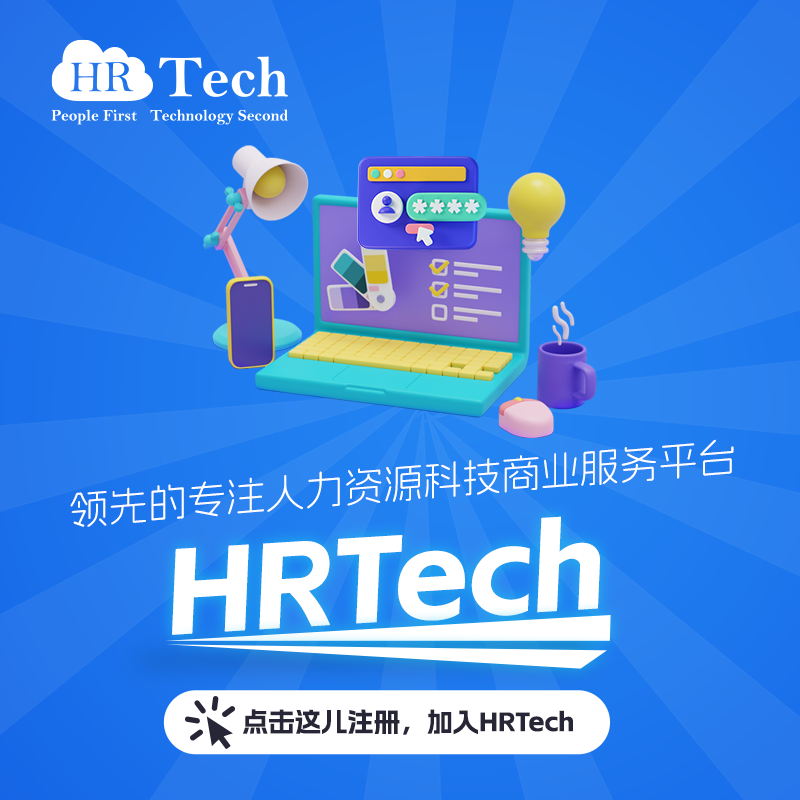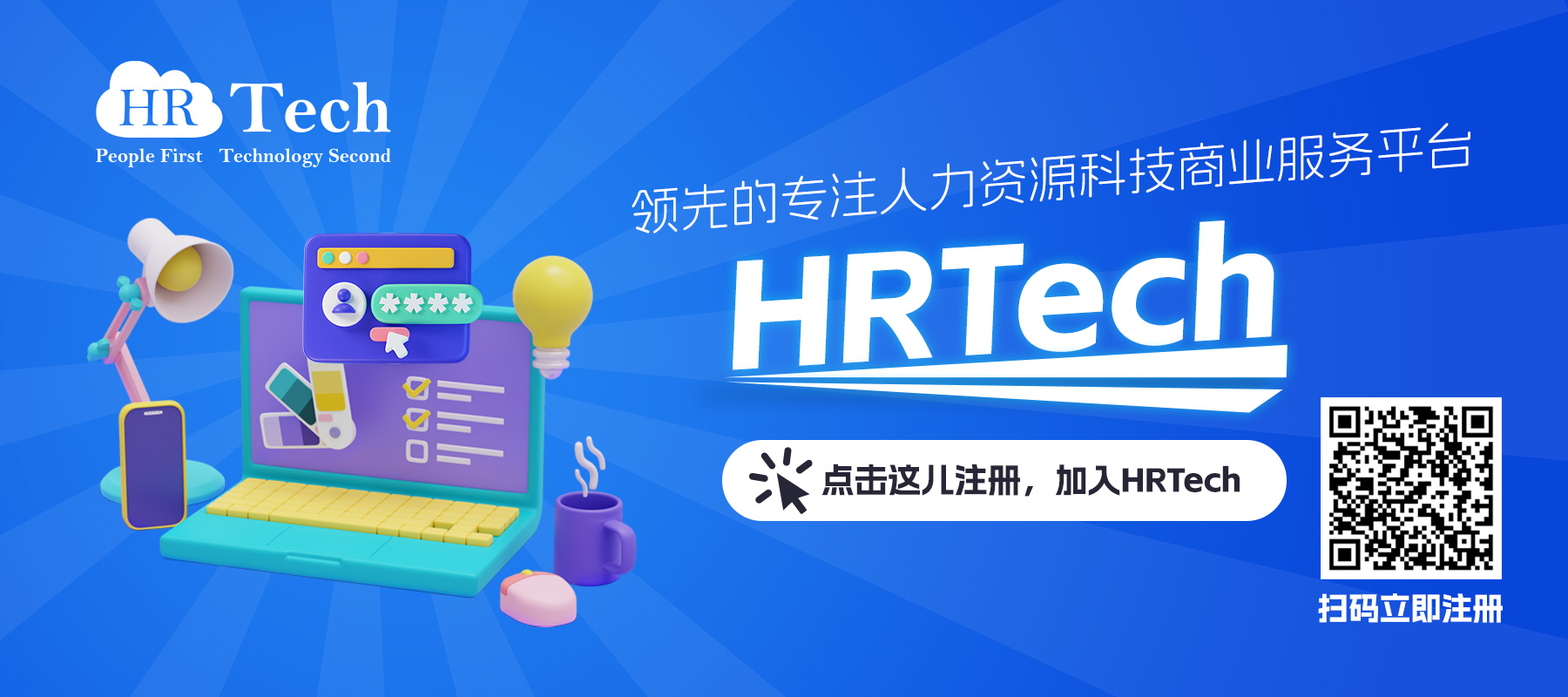-
 人才招聘
人才招聘
谷歌助手问世,预示AI招聘即将成为新趋势?
来源| 环球人力资源智库
AI必定会让一部分员工失业,但人才永远紧缺
近日,谷歌召开一年一度的Google I/O大会。亮出了王牌AIGoogle Assistant,Ta可以无障碍和人沟通,惊艳全场。
发布会上,用户对Google Assistant说:我想剪头发。GoogleAssistant接受指令后直接一个电话轰炸到洗剪吹一把手Tony老师那里!!
Google Assistant:你好,我想帮助我的客户预约做头发。
理发店:预约什么时候呢?
Google Assistant:你觉得3号可以吗?
理发店:我查查Tony老师的档期,请稍等。
Google Assistant:嗯哼?
这一声“嗯哼”把全场人都逗笑了,谁也想不到一个人工智能AI可以做出如此自然的反应…接着,Google Assistant又继续了Ta的表演:
理发店:3号12点不行,Tony老师要帮王阿姨烫头发。
Google Assistant:那10点到12点呢?
理发店:你的客户想剪发还是烫头发?
Google Assistant:就修一下。
理发店:那没问题,我们10点见!
整段对话,Google Assistant表现的自然流畅,理发店那头丝毫没有察觉到自己竟然是在和AI对话。
AI时代已经到来,失业潮也离我们越来越近!商超无人化、配送无人化、公司无人化...的标准场景无人化都将成为未来的目标。
未来的人力资源也将在科技的推动下完成创时代的全新变革,这会让一大批HR被人工智能替代,但这并不意味着所有员工都会失业,因为优秀的人才无论是在过去、现在,还是未来都依然是非常稀缺的。
优秀HR如何识别人才?
寻找「人」而不是某个标签
很多HR寻找人才时首先瞄准TMD、BAT等名企,但HR还是要问问自己,想要的是「人才」还是「某某名企的人」。
也有不少CEO或业务部门负责人偏爱名企出身这个标签,喜欢以公司大小、知名度来衡量和判断候选人的优劣,非BAT,TMD出来的人不看,这是我们经常能够听到。
这样的人才质量真的好吗?真的就能为公司创造价值吗???
如果按照这种逻辑,那就和在菜市场买萝卜没区别了,判断这个萝卜好坏的标准只是通过个够不够大,皮够不够亮,有没有贴着某某牛逼产地标签等等!
HR如果只是这样去招人,不用未来,现在就可以被替代掉。
不是所有的人才都集中在名企和独角兽企业中,招人要有发现人才的独特视角和专业能力,要基于企业的特点、业务需要、用人的要求来思考你所需要的人才到底在哪里,而不是盲目的追求BAT、TMD等名企背景。
「名企出身」是非必要核心条件,是锦上添花、有比没有更好的事情。
所以记住,首先要找的是人才,人才,人才!(重要的事说三遍)
如何甄别与企业匹配的人才?
3+2法则,即3甄2验。
简历甄别, 一份优秀的简历通常呈现出的特点是:内容上逻辑清晰,重点突出,业绩和产出可量化。
面试甄别, 行为+结构化面试,着重了解简历中呈现出的核心内容,及业绩,产出背后的逻辑。
举个例子:
比如XX销售总监在XX知名公司工作期间完成了100个亿的销售任务。
面试官可以从当初的目标设定开始,为什么制定这样的销售业绩目标?
当下的市场环境是怎样的?
竞争对手的同岗位业绩目标设定的范围是怎样的?
实现这个目标所需要的路径是怎样的?
过程中遇到了什么样的问题和困难?
这些问题又是通过什么样的方法解决的?
等等类似的问题去展开面试的甄别。
测试辅助甄别, 基于岗位胜任力模型,了解岗位需求的核心纬度,针对性的给予相应的测试,辅助甄别候选人于岗位的匹配程度。
结合背景调查验证与试用期管理验证综合考察候选人业务能力。
招聘的本质是以需求为导向,需求不仅决定了招什么样的人才,也决定了招聘的路径,什么样的需求匹配什么样的人才,这里面人岗匹配是关键,只有把合适的人放到合适的岗位上才会有最好的效果,岗位上切勿盲目追高追名。
所以无论需要招聘什么样的岗位,前提都必须要搞清楚需求,招聘中遇到的大部分问题都源自于需求本身。基于什么样的背景出现了这样的需求?需求的核心要素是什么?基于核心需求的岗位定位和人才画像是否清晰?根据需求制定有效的招聘计划和策略才是成功招聘到合适人才的基础。
其实,人力资源的工作和医生非常相似。
医生通过望、闻、问、切,找出病人的问题对症解决;HR们通过对组织的望、闻、问、切发现组织上的问题然后通过不同的管理工具解决;而招聘通过筛、甄、测、验招聘到组织中最为合适的人才。
相信短时间内AI还学不会这些非标准化的专业技能, 但我们还是要在AI能够替代我们之前,去提前了解、学习AI,强化工作技能,提升自己的价值,在时代变革的同时完成自我的变革,这才是唯一不被替代的出路。
-
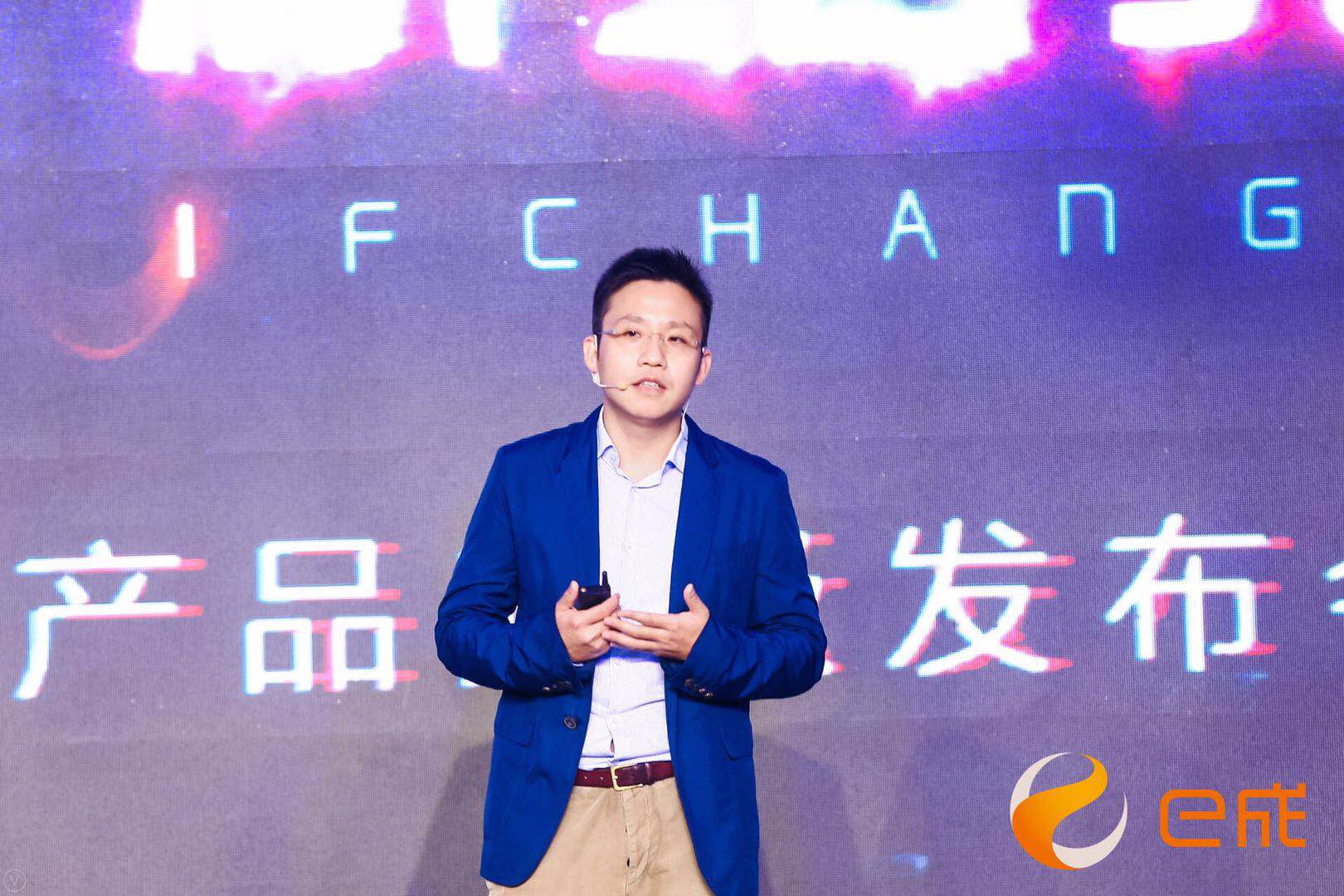 人才招聘
人才招聘
e成科技举办2018产品升级发布会 描绘数字化人才决策未来生态
5月25日,e成科技在上海成功举办2018产品升级发布会,云集300余名HR行业专家、资深经理人及新闻媒体工作人员,见证e成科技人工智能产品全新升级,共话未来AI+HR无限可能。
会上e成科技创始人兼CEO周友鸿先生、首席科学家陈鸿博士、企业服务业务负责人杨宝龙先生、法国里昂商学院副校长王华教授以及众泰汽车总部人力资源中心总经理杨雷先生出席并发表演讲。
人工智能助推企业人力资本转型
在发布会现场,e成科技创始人兼CEO周友鸿发表了题为“数字化人才决策浪潮”的开场演讲。
周友鸿指出,AI时代HR要学会拥抱数字化人力资本,而e成科技在做的就是用人工智能技术带领人力资本管理实现新的跨越:
一方面,AI让招聘更对、更快、更省。通过AI算法,高效、精准地建立企业画像、岗位画像、人才画像,从而做出更准确的人才决策,提高人力资本决策效率。
周友鸿介绍,目前e成科技主要有以下智能招聘产品:AiTS系统,帮助HR进行信息化管理、智能化运作、数字化决策,达到企业降本增效的目的;精英速递,智能匹配企业需求和猎头优质资源;人脉内推,挖掘员工人脉资源;人才库,配备智能招聘机器人,高效管理人才资源,节约招聘成本。
另一方面,AI辅助人才决策数字化。除了“选”,AI还将全面渗透企业人才“用、育、留”相关决策场景。
在员工画像的基础上,e成科技可利用AI技术对人才质量进行评分排序,帮助企业筛选高潜力高绩效的员工,组建协作效率更高的团队,从而做出更正确的人才决策。
AI时代下的招聘新动态
人力资源行业是做关于人的决策的数据密集型行业,这一特征使它与知识图谱成为一对“天作之合”。
e成科技首席科学家陈鸿博士从技术角度揭示了人才知识图谱如何帮助企业做出更准确的人才决策。
他解释道,e成科技已经初步构建以人才为中心的图谱,刻画人才画像和岗位画像,可应用于人岗匹配、人才质量评价、员工内推、团队协作等具体场景。
e成科技合伙人兼企业服务业务负责人杨宝龙先生发布了e成科技最新升级的产品,他精炼了以下四个产品亮点:
为每个岗位刻画人才画像,由AI将从海量主投简历里匹配筛选,提高招聘效率;
行为数据升级岗位画像,沉淀招聘过程中的行为数据,更精确地刻画岗位画像;
快速挖掘合适的被动候选人,基于离职预测和人岗匹配技术,在企业人才库中快速定位合适的被动候选人,挖掘员工内推人脉和猎头优质资源;
AI赋能企业开创人力资本数字转型,帮助企业提升人才决策的准确性及客观性。
AI将改写人才发展未来简史
法国里昂商学院副校长,法国里昂商学院亚洲校长王华教授在“人才发展的未来简史,人工智能vs心智”的演讲中表明人工智能对人力资本细分领域正在产生深刻影响。
同时,他也对人与人工智能的关系进行了前瞻性的讨论,提出在人工智能时代,人才更要关注自身心智模式的发展。
众泰汽车总部人力资源中心总经理杨雷先生作为资深HR专家发表了题为“互联网时代企业招聘的迷局及突围”的演讲,阐述了互联网时代招聘渠道的变迁和招聘工作的痛点,指出智能化招聘系统的重要价值及未来发展方向。
e成科技2018产品升级发布会完美地落下了帷幕。此次e成科技首次以发布会形式对外发声,表明了e成科技经过5年多的沉淀和积累,已经初步描绘出AI时代数字化人才决策的未来生态。正如CEO周友鸿所言,未来的AI+HR还有无限可能,e成科技还有很长的路要走,期待e成科技作为国内领先的AI人才决策解决方案提供者,为人力资源行业的全新变革持续贡献力量。
-
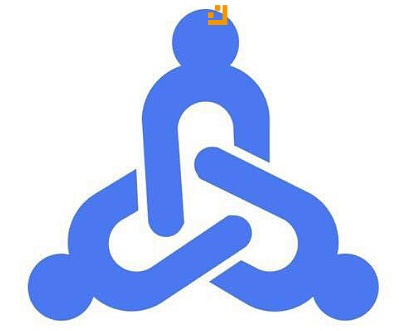 人才招聘
人才招聘
火币集团战略投资的链人国际上线 主打区块链高端人才招聘
文| 姚远
据最新消息,由火币集团战略领投的链人国际正在筹备上线,此消息向区块链行业传递了一大福音,区块链行业人才招聘的难题即将得到解决。
据悉,链人国际主要为区块链企业提供高端人才招聘服务,目标是成为区块链招聘细分领域的独角兽,创始人为原火币高级人力资源总监张晓媛女士,拥有15年的人力资源管理经验,曾就职于酷我音乐,巨人集团,现为火币集团管理顾问。
而据圈内人士透露,张晓媛女士是火币网最早期员工,创始团队高管,曾在火币担任高级人力资源总监,是火币企业文化灵魂人物。作为区块链行业资深人士,张晓媛女士有着深厚的圈内人脉和行业资源。
链人国际的业务范围主要包括为区块链企业提供猎聘服务;985、211、海归人才输出/企业管培生推荐;招聘流程外包服务;区块链高端论坛、大型招聘会组织;区块链外语翻译等服务,业务渗透了区块链行业底层服务的各个方面。
链人国际在诞生之时,就受到众多圈内投资者和合作伙伴的追捧与垂青。
投资者方面,链人国际由火币集团战略领投,并获得区块链基金歌者资本、金色财经、信天创投、库神钱包、蜂窝矿机、链上科技等行业知名机构和投资人的投资。
合作伙伴方面,链人国际的合作包括火币、金色财经、币世界、蜂窝矿机、库神钱包、链上科技、博晨、EOSbeijing等。
-
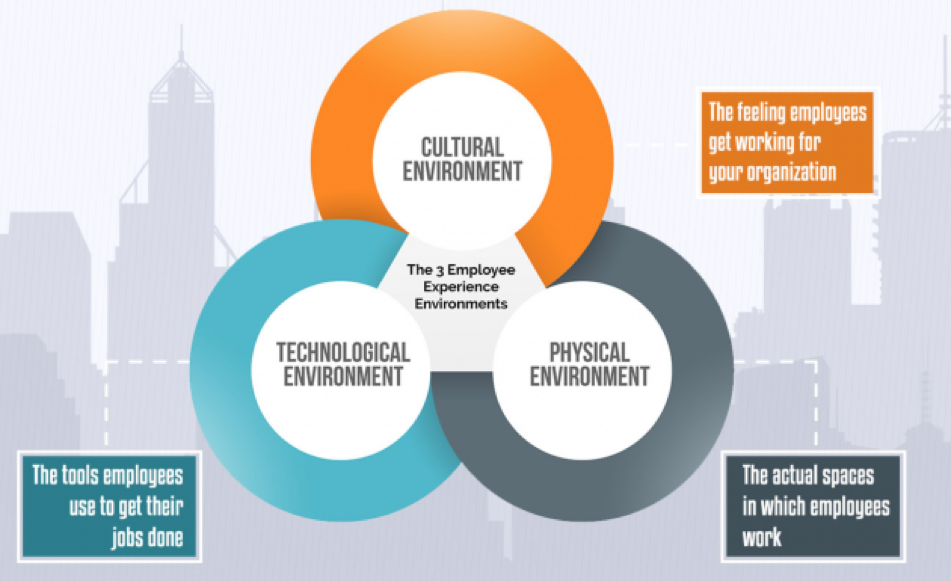 人才招聘
人才招聘
改善员工体验的三大策略:创造属于你自己的雇主品牌故事
文| dave sutton
2016年底,Asurion的人才招聘与保留团队意识到,如果他们想赢得顶尖人才,他们需要改善员工体验(EX)。
这家私营公司为3亿多客户提供移动设备保护和技术保修服务。他们帮助人们保持在线并实现最佳生产力。
这意味着这家公司需要大量的技术人才!
在科技领域,人才争夺战是真实存在的。我们正在经历很长一段严峻的人才短缺时间。
“雇用时间”的数量似乎永无止境,68%的人力资源经理表示他们在填补职位方面遇到困难。招聘经理在一个非常有限的人才库中对合适人选的竞争是非常激烈的。
Asurion需要讲述一个清楚而真实的雇主品牌故事,说明为什么一个技术人员应该加入,以及为什么现在的高绩效员工应该留在公司工作。
Asurion的领导层依靠David Marks创造了一个引人注目的雇主故事,完全使EX从“同一片海中脱颖而出”,并使公司与市场上的竞争雇主脱颖而出。
大卫需要有效地传达Asurion的雇主品牌故事以达到他们所追求的高品质人才,并确保EX完全符合他们故事的承诺。
你可能会认为薪酬是引人注目的员工体验的关键。但是,正如David在Asurion学到的那样,提高工资可能是员工头脑中的首要问题,但薪酬通常远远低于实际触发加入或留在组织中的行为的收益。
事实证明,许多改进EX的策略都非常具有成本效益,并且更易于实施和维护。
正如Jacob Morgan在他的书“员工体验优势”中指出的那样,有三种环境构成了任何员工体验:文化,技术和物质。
文化环境体现了员工为公司工作的感觉。
技术涵盖了员工用于完成工作的工具和功能。
身体体现了员工工作的实际空间。
图形信用:员工体验优势
这三种环境相互支持和加强。一些最有趣的策略实际上存在于上图中的交叉点处。
这里有三个策略来塑造员工对环境的看法并提高员工体验:
1.提供时间表和工作场所的灵活性
你的员工比你更了解他们的工作日要领。即使你是一个超级微管理人员,你可能不会每天与你的每一位客户打交道。
你的一线员工是你业务的一面。如果你赋予他们自主决策权并让他们负责管理自己的工作量并获得结果,那么他们对EX的看法就会大大改善。采用弹性工作时间和远程办公的工作场所在EX上得分更高。
如果你可以帮助员工避免每天繁忙的通勤时间,你也会看到生产力的提高。在Asurion,可定制的时间表选项对于未来的员工来说是一大吸引力,随着员工对工作生活的更多控制,它增加了整个业务的积极性和动力。
2.制定战略性员工投资
虽然很容易假设大多数人只为薪水工作,但高绩效员工正在越来越多地寻找更多追求。
终身就业的日子已经过去了,但这并不意味着你不应该培养能够强化个人和职业发展的员工体验。
Asurion公司最具潜力的员工将他们的工作视为在科技行业内学习,成长和进步的机会。
创造学习型文化和投资于员工职业发展的好处是广泛而令人鼓舞的。
当员工知道他们正朝着个人目标迈进时,他们的积极性和积极性就会增加,并减少任何停滞和无聊的可能性。
庆祝和欣赏你的团队的成就,他们会在绩效和倡导方面为你带来10倍的报酬。
3.确保简单明确的角色和责任
没有什么比开始一项需要新职能的新工作更糟糕,你实际上被要求扮演与之前完全不同的角色。
Asurion竞争的信息技术领域尤其如此。
“技术”是一门广泛的学科,很难找到同时擅长多种IT功能的员工。
有时候,最好的策略是以不同的方式思考问题,并在EX中包含人员配备能力。
利用领先IT专家的按需工作人员,你可以在IT功能的某些部分填写特定角色和特殊技能组。
这可以让你的内部员工将精力集中在更具战略性的挑战上,同时为员工对其角色和工作量的感知带来更多的简单性和清晰性。
与客户体验(CX)非常相似,有吸引力的员工体验(EX)为你的目标受众提供了关心理由,听取理由,参与理由,加入理由以及最重要的理由。
通过将文化,技术和物理环境与你的雇主品牌故事结合起来,你可以吸引并留住高绩效团队。
以上内容由HRTech AI编译完成,仅供参考e
-
 人才招聘
人才招聘
招聘新花样?胜哥英才网让企业免费发布职位,个人参加面试可拿面试奖金
大学校园的秋招正在如火如荼地进行中,网络招聘的方式由于方便、快捷的特点也被广泛使用着。中国网络招聘市场稳定增长:2017年上半年中国网络招聘市场规模为27.1亿元,同比增长率为18.9%,现在仍是双巨头市场格局:前程无忧和智联招聘领跑行业,其中前程无忧营收份额最高,占比31.8%;智联招聘紧随其后,占比30.7%。
近日,记者采访了胜哥英才网创始人陈前胜,他表示,胜哥英才网对标的公司正是前程无忧和智联招聘,不限制招聘行业,是一个专注于为企业提供人才招聘,为求职者提供找工作服务的网络招聘网站。
企业可以向人才发送面试邀请和查看人才的联系电话。在生成面试邀请记录时,企业可以设置5元到1000元的奖金金额。如果求职者来面试,这笔奖金将进入他的账户,网站收取1元手续费;如果没有来面试,奖金全部退还给企业。同样,企业在网站上搜索到求职者是看不到联系方式的。求职者可以为自己设定5元到1000元的奖金金额,企业如想查看联系方式就必须支付奖金,同时支付手续费1元。
陈前胜表示,胜哥英才网最大的特点就是个人参加面试可以拿面试奖金,企业免费开通招聘服务。他说,前程无忧和智联招聘都是招聘企业必须向购买他们的会员之后,才能使用他们的招聘服务。而胜哥英才网只需要企业提供有效的营业执照和身份证明即可免费开通招聘服务。
胜哥英才网主要的用户定位在微小企业,官网于今年9月上线,目前已有100家企业入驻。“对于小企业来说,在招聘网站上付年费充会员其实是不值当的。同样的价格却是不同的付费效果,收的简历数量不够,与大企业的竞争力相比也有些不足。”
胜哥英才网的盈利模式主要是面试手续费、查看电话手续费和奖金池的利用。目前主要的推广形式有两种: 一是网络推广,利用网络在优质论坛和QQ群中向目标用户推广。二是地面推广,到一些小企业聚集点利用扫楼的形式来进行推广。胜哥英才网的官网已上线两个月,现有的注册用户在100人左右,主要是一些工作经验在1年以上的白领。
胜哥英才网CEO陈前胜毕业于武汉理工大学,是个连续创业者。2012年6月,他曾创办与滴滴打车一样的快捷打车。目前,滴滴打车融资已超100亿美元,估值550亿美元。但最后因技术和资金原因导致项目失败,“我觉得,创业不光要好idea,还要技术和资金支持。首先要做的,就是尽自己的努力去做到最好。”
目前,胜哥英才网正在寻求种子轮融资,预计出让股份10%来完成融资50万。
【猎云网(微信:ilieyun)武汉】11月6日报道(文/钱佳信)
-
 人才招聘
人才招聘
以推荐制度切入招聘市场,喵才想要打造全新人才招聘体系
互联网快速发展,大量的人才从传统行业跨入互联网,但低效的招聘环节已经满足不了各方的需求,易观数据显示,2016年我国互联网招聘市场规模在60亿左右,在国家双创浪潮下,无数中小企业平地而起,人才需求旺盛。
不过目前行业痛点也很明显,很多人收到面试邀请后却并不赴约,就算招到了也并不确定此人就是最适合的人选,而且招聘周期过于繁杂、冗长,“一面定工作”的机制也让许多人诟病,很多人才明明非常优秀,可是面试当天状态不好,面试官由于此前和求职者毫无关联,只能通过本次面试来判断优劣。
解决这个问题,喵才的思路是用浸润在行业多年中的“老人”,给职场新人做背书。即深度挖掘职场老人的潜在人脉。为了做到这点,“喵才”引入了职场经纪人概念。
目前获取职业经纪人的途径是邀请制度,公司会给看重的人才提供一个邀请卡,获得邀请卡的用户需要用手机注册账号,即可成为职业经纪人。每一个职业经纪人在自己的领域都有超过五年的工作经验。
具体模式上,产品上线初期,从开始的人脉挖掘,到安排工作机会,谈判,到最后的入职,每一部操作,职业经纪人都有相应的奖励,分为邀请奖、到面奖、过面奖、接offer奖、入职奖、转正大红包、邀请奖。不过,以这种模式运营一段时间后,发现APP内的“经纪人”并非职业HR,无法胜任所有这些环节。
认识到这些痛点,团队改版,重新上线后,功能简单了不少,经纪人可以在各自圈子中寻找优质人脉,引导其注册后,喵才团队即可将人选推荐至公司,当然,经纪人个人也能直接将人选推荐入职。入职成功即会对经纪人有奖励。
来源:36氪 ,作者:徐宇,如若转载,请注明出处:http://36kr.com/p/5080911.html
-
 人才招聘
人才招聘
用钱招人不稀奇,Loom要做用股权招聘人才的SaaS平台
【猎云网(微信号:ilieyun)】2月19日报道 (编译:peko)
据Loom创始人Chase White介绍,技术型创业者们都会经历一个相似的创业周期:开始创业→向天使投资人出售股权→用这些钱雇佣开发者以构建实体产品。
有一天,White突然想到“为什么不取消中间环节呢?”换句话说也就是,为什么不直接把股权给开发人员呢?
White表示,这可以让创企构建一个基本产品,先检查产品是否具有发展潜力,然后再寻求融资。这也正是White想在Loom上实现的。
公司可以在网站上发表自己的项目创意,当然,敏感信息会被屏蔽。之后,想要参与项目的人会主动报价投标;公司审查对比报价,并且确认投标者(即公司产品未来的潜在开发人员,可申请在平台上进行资历认证)的信息之后,即可发送初始消息,建立联系。
如果公司确认了要聘请某一投标者,那么需要向Loom平台支付99美元作为联系服务费用。如此一来,Loom便可作为来往双方信息交互、文件共享和交换联系方式的平台。
当然,开发者的收益不仅限于股份分成。White说道,Loom平台上 80%的报价都是结合现金和股票相结合的,公司和开发人员可以自行决定报酬的形式——尽管这可能会导致一些冲突。
White补充道:“我们当前的目标是让联系变得更为便利。未来我们将采取更多的措施来缓解和解决冲突,但要实现这一点还有很长的路要走。”
“开发者股权制”并不是一个全新的理念。事实上,有一家名为CoVenture的公司就是专门提供开发和设计工作以换取股权的。
另外,在Loom之前,已经有一些模式颇为类似的平台在市场上了,Late Labs就是其中的一家。它的创始人Justin Johnson现在是Loom的一名顾问。Johnson表示,帮助人们建立彼此之间的联系是目前想要追寻的目标。
White表示,Loom最初是想推出系列项目,持续收取。但在8月推出后,用户们却在“窃取产品”——一旦成功取得联系,就马上注销,不支付任何费用。
为了避免这种情况,Loom改变了当前的收费政策,只收取最初的联系费用。White补充说:“企业家都是野蛮人。他们会做任何事情来铺平自己的发展道路,这一点我不怪他们。”
White并不反对外部融资的想法。据悉,Loom刚刚获得60万美元的种子轮融资以拓展团队,雇佣首批员工。
本文来自猎云网,转载请注明出处:http://www.lieyunwang.com/archives/274135
-
 人才招聘
人才招聘
Facebook开发人才招聘平台,抢占LinkedIn市场
Facebook打算在公众主页推广招聘平台与LinkedIn抗衡。新的招聘平台可以为Facebook带来更多的流量,而想要招聘人才的公司们也可以通过社交网络平台,将职位呈现给更多的候选人。
Facebook进军社交人才招聘领域
在接受Techcrunch采访时,Facebook发言人表示,公司已经开始实验大量的招聘功能。鉴于已经有很多中小企业在其Facebook主页发出招聘信息,Facebook现在所需要做的就是测试页面,让公司能够在其主页创建职位并接受申请。
这项新的功能可以媲美LinkedIn,也可以与目前正在发展中的Work4, Workable, and Jobscore等招聘平台竞争。这些招聘平台帮助企业构建工作申请标签,并把标签嵌入到企业Facebook主页中。早在去年,Facebook测试与LinkedIn相似的个人简介标签时,就有计划开放工作招聘平台。
通过Facebook招聘平台,企业可获得更高的关注度
Facebook的招聘平台将会添加新的功能,实时更新招聘页面,并提供工作岗位相关信息,例如工作种类、薪资、全职还是兼职等。这种呈现方式可以使招聘信息与Facebook上其他内容区分开来,在庞杂的信息中吸引求职者的注意。
这些招聘广告也将在页面的任务选项卡中显示出来,这是Facebook专门为企业建立的页面,企业可以通过这个页面向求职者发送消息。相比于公司网站的静态招聘页面,企业将通过开放的社交媒体招聘平台会获得更多的潜在关注者。
招聘信息页面将出现“立即申请”按钮,求职者按下申请按钮,网站会启动标准的工作申请流程,并把申请者Facebook上的个人公开信息自动填充到招聘信息表内,这可以帮助求职者快速申请多个职位,无需重复输入冗杂的个人资料。
在应聘者提交求职申请后,企业会收到Facebook Message发送的提示信息。尽管此项举措会促进企业使用Facebook聊天工具,但可能很多企业会觉得通过Facebook的聊天功能接受应聘者的求职申请效率低下,将求职申请发送至公司招聘人员的邮箱或许是个更好的选择。
利用强大的数据功能,Facebook将招聘变得更具有针对性
企业可通过支付一定金额,将自己招聘的信息有针对性推送给更多的人,这将会直接与LinkedIn提供的广告功能直接竞争。Facebook的巨大优势是可接触更广泛的人群,获得大量的个人数据,最终提升参与度。
几乎每个人都会在Facebook上填写一份个人资料,这些资料往往包含了用户的教育背景,兴趣爱好,以往的工作经历等等广泛的信息。公司的招聘者可通过Facebook提供的招聘服务和个人数据,更有针对性地投放招聘信息,去接触更符合要求的候选者。由于用户不断地浏览Facebook,这些招聘信息最终很有可能被符合要求的应聘者看到。
作为对比,并不是每个人都会在LinkedIn创建自己的个人资料,LinkedIn只有4亿多的注册会员,而Facebook拥有将近18亿用户。LinkedIn的大多数用户都是有换工作或找工作需求的人。Facebook却可以接触到没有找工作或打算换工作的用户,这些用户可能会被Facebook招聘平台上企业所发布的高薪工作所诱惑。
当你想要买东西的时候,你可能会在Google上搜索;当你想要找工作时,LinkedIn上的广告会帮忙。而Facebook其实提供的是一种需求,向一些没什么想法的人提供一些有趣的东西,勾起他们的欲望。这也是为什么在谷歌的垄断下,Facebook依旧能够建立起自己的品牌,并且在广告方面表现优异。
此前,微软以262亿收购LinkedIn, Facebook或许会在这些项目上寻求投资。
本文来自翻译:techcrunch.com
-
 人才招聘
人才招聘
甄牛:想要用智力活动测评助力企业人才招聘
来源:猎云网(微信:ilieyun) 文/李彬
1
近日,致力于解决知识性人才招聘难题的甄牛于今年2月份拿到了100万元的种子轮融资,创始人柯海洋介绍,甄牛从智力活动和生命健康测评切入,服务于B端企业、公司,未来将搭建自己的招聘平台。
1
传统的人才招聘网站是销售驱动型,平台依赖大量的求职者和企业端数据运营,简单的性格分析、职业规划测试缺乏准确性的同时,也难以作为企业招聘面试时的参考数据。甄牛的创始人柯海洋是生物学、神经学博士,先后就读于东南大学、中科院和耶鲁大学。不同于主观性强的文字答题、试卷调研,甄牛从生物物理的角度对求职者的智力活动和生命健康进行科学的测评。
甄牛的智力活动测评包括人类职业天赋才能和人性品质两大方面,测试过程要采集个人的生物特征和生理特征,如血型、皮肤、手掌等。测试者打开微信扫描二维码即可进入测试界面,通过3分钟的在线问答环节,以图表的方式将沟通能力、语言表达、动手、社交、思考等职业特性量化,数据采集和分析经由后台自动完成,答题结果不受人为因素干扰。如果测试者有意做倾向性选择,系统将不提供任何数据分析结果。
1
“求职者需先完成测评再填写简历,根据个人数据对接企业招聘需求,后期将自动匹配双方的信息”柯海洋告诉记者,甄牛帮助求职者和企业建立一个类似微信、微博的社交圈子,通过兴趣、行为匹配完成3分钟的知识性人才招聘流程。未来,甄牛APP上线后,将引入人脸识别、行为检测,同医疗机构合作进行血液化验,把人才数据分析的准确性和科学性再次提升。
1
甄牛的测评结果目前只对企业开放,未搭建人才招聘信息平台之前,服务模式是B端企业在面试过程中使用甄牛对求职者进行测评,根据效果支付年费。完成测评后甄牛将建立数据库保存用户的测评结果,目前已经与100多家企业展开合作。
为企业提供人才测评的解决方案不是甄牛的最终目的,市场上已有的招聘信息网站在柯海洋看来过于依赖广告投入和市场推广,甄牛想搭建一个基于智力活动和生命健康测评数据分析的人才招聘平台,通过匹配企业需求与求职者能力,直接完成人才招聘。企业可在甄牛平台上发布招聘需求,甄牛将其同时推向各大招聘网站,加速企业获取人才的进程。
1
“企业在招聘方面没有忠诚度,只有能为他们招到好员工的网站平台才会受到追捧”柯海洋想通过生物特征测评的新路径,为甄牛打开人才招聘平台的通道。但甄牛的智力活动测评还只是一种参考,企业HR在面试过程中依旧要根据求职者的品行、能力考量其综合素质,这也是甄牛将测评作为切入人才招聘市场的症结所在。
1
据悉,甄牛已启动天使轮,计划完成200万元的融资,主要用于市场推广和运营。
-
 人才招聘
人才招聘
个性化人才招聘平台 TheRight.Fit 获得 75万美元种子轮融资,帮助品牌商找到最酷的创意和专业人士
编者按:找临时模特、演员是不是很难?但是个性化人才招聘平台能够搞定这一切。
TheRight.Fit,这家初创公司可以帮助品牌商和代理商找到创意、专业人才。本周一(8月1日),该公司宣布获得一笔 75 美元的种子轮融资,领投方是知名风投 AirTree Ventures,据了解,该公司计划利用这笔投资进一步开发其招聘平台,并加速向更多垂直行业提供服务。
TheRight.Fit 公司是在去年底成立的,两位创始人兼联席首席执行官分别是 Taryn Williams 和 Aurelien Labonne。该公司的商业模式其实并不复杂,就是帮助品牌商绕过传统人才中介和猎头公司,直接找到自己心仪的创意、专业人才;同时,在 TheRight.Fit 平台上很多业内专业人士也能建立资料档案,把自己“推销”给有需要的品牌商,TheRight.Fit平台的主要用户包括模特、演员、摄影师、化妆师、造型师、以及其他行业的专业人士。用户完成资料注册之后,品牌商就可以搜索、预约、甚至可以在该平台上直接支付报酬。
举个例子,如果你是个模特,完成资料注册之后,一些时装展的组织者就可以搜索到你,然后与你联系,提供工作机会。
从去年十二月份成立以来,TheRight.Fit 平台上已经注册的各行业专业人士数量超过 3000 人,并且与超过 1000 家品牌商和活动代理商建立了合作关系,包括奥美广告、第十频道、环球音乐、以及General Pants,等等。
对于本次获得 AirTree Ventures 的投资,TheRight.Fit 公司首席执行官 Williams 说道:
Airtree Ventures 专注于以投资“平台型”初创公司,并且拥有丰富的行业经验,能够帮助我们快速成长。与他们合作同样也能确保我们获得最大的机遇,下一步,他们会帮助拓展澳大利亚和纽约的业务。
事实上,通过口碑营销,TheRight.Fit 业务目前已经获得了强劲的有机增长,因为这个平台能够满足品牌商和各垂直行业的专业人士的招聘/求职需求,实现双赢。下一步,TheRight.Fit 计划将这种人才招聘模式推广到广告和媒体行业,帮助专业公司在短时间内找到自己所需要的技能专业人士。
现阶段,TheRight.Fit 公司的业务主要覆盖澳大利亚和纽约两座城市,除了将拓展更多美国城市业务之外,他们还计划进军亚洲市场。
作者:Joker
来源:鸵鸟电台(微信:鸵鸟FM)
 扫一扫 加微信
hrtechchina
扫一扫 加微信
hrtechchina
 人才招聘
人才招聘
 人才招聘
人才招聘
 人才招聘
人才招聘
 人才招聘
人才招聘
 人才招聘
人才招聘
 人才招聘
人才招聘
 人才招聘
人才招聘
 人才招聘
人才招聘
 人才招聘
人才招聘
 人才招聘
人才招聘





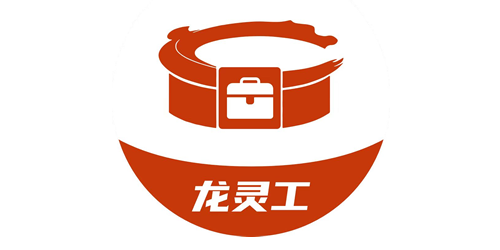
 扫一扫 加微信
hrtechchina
扫一扫 加微信
hrtechchina



